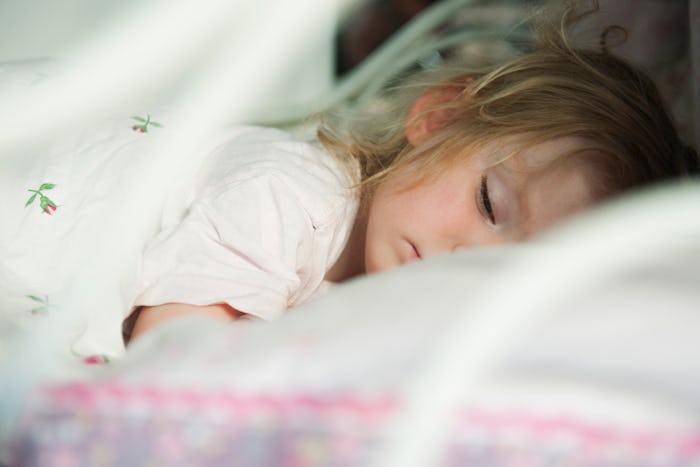Life

Every Year Hundreds of Toddlers Die In Their Sleep, Now Science Might Know Why
While autopsies of such cases provide few clues, video recordings of the sleeping children might offer important insight.
To lose a child is a parent’s worst nightmare. To lose a child and have no clear idea what happened is beyond comprehension. And yet, every year experts estimate that between 1,800 and 3,000 children in American die from sudden unexplained death (SUD) causes. While infants in those cohort are referred to as Sudden Infant Death Syndrome (SIDS), several hundred SUD cases occur in children over the age of 1, primarily toddlers. Most of these deaths happen while children are asleep in their beds and even when autopsies are performed, there does not appear to be a verifiable reason for their death. In an effort to finally understand the cause of SUD in children, researchers recently studied videos taken of children who had died in their cribs as they slept, and they think they might have found the root cause.
Researchers at NYU recently studied seven videos of children between the ages of 13-27 months who had died by SUD causes, generously shared by their parents in an effort to understand what had happened. These home video recordings of the children’s last sleep cycle before their death were assessed by eight physicians to look at the movement and sounds these children made in the hours before they died. The findings, which were published in the science journal Neurology, showed that five of the seven toddlers died after displaying movements that the physicians believed to be signs of a seizure. In each case, the seizure lasted less than a minute and occurred 30 minutes before the infant died. The remaining two videos were interrupted by sound and movement in the room and therefore more difficult to assess.
While study lead investigator Laura Gould acknowledged in a press release that the study was relatively small and needed further research, it also “offers the first direct evidence that seizures may be responsible for some sudden deaths in children, which are usually unwitnessed during sleep.”
Unfortunately, CBS News chief medical correspondent Dr. Jon LaPook told the outlet that there are no real indicators parents can watch for to safeguard against seizures, but did say that there may be “one little clue” parents can be aware of. “There is an increased risk of febrile seizures — that's the seizures associated with fever in children — who then go on to have this unexplained death between the ages of 1 and 4,” he said on CBS Mornings.
Febrile seizures, which are fairly common in young children (especially those between 6 months and 3 years old) and triggered by a fever above 101 degrees Fahrenheit, are marked by loss of consciousness or passing out, uncontrollable shaking, eye rolling, and stiff limbs, usually only last between seconds to a couple minutes. The National Institute of Health urges caregivers to call 911 if a febrile seizure lasts for more than 5 minutes, though a “normal” such seizure can last for up to 15 minutes. Generally speaking, febrile seizures are harmless on their own and most children make full recoveries quickly.